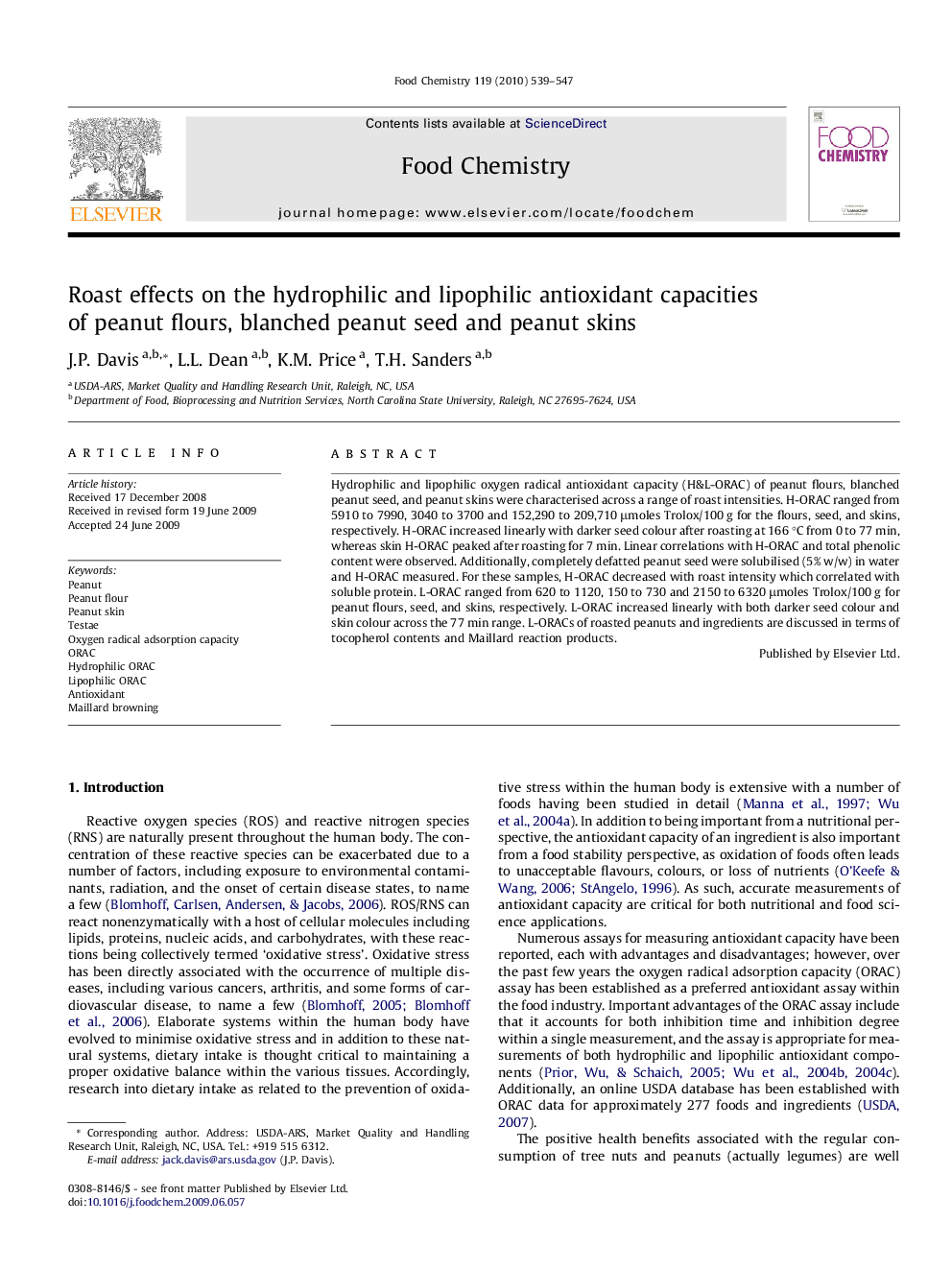| کد مقاله | کد نشریه | سال انتشار | مقاله انگلیسی | نسخه تمام متن |
|---|---|---|---|---|
| 1186688 | 963446 | 2010 | 9 صفحه PDF | دانلود رایگان |

Hydrophilic and lipophilic oxygen radical antioxidant capacity (H&L-ORAC) of peanut flours, blanched peanut seed, and peanut skins were characterised across a range of roast intensities. H-ORAC ranged from 5910 to 7990, 3040 to 3700 and 152,290 to 209,710 μmoles Trolox/100 g for the flours, seed, and skins, respectively. H-ORAC increased linearly with darker seed colour after roasting at 166 °C from 0 to 77 min, whereas skin H-ORAC peaked after roasting for 7 min. Linear correlations with H-ORAC and total phenolic content were observed. Additionally, completely defatted peanut seed were solubilised (5% w/w) in water and H-ORAC measured. For these samples, H-ORAC decreased with roast intensity which correlated with soluble protein. L-ORAC ranged from 620 to 1120, 150 to 730 and 2150 to 6320 μmoles Trolox/100 g for peanut flours, seed, and skins, respectively. L-ORAC increased linearly with both darker seed colour and skin colour across the 77 min range. L-ORACs of roasted peanuts and ingredients are discussed in terms of tocopherol contents and Maillard reaction products.
Journal: Food Chemistry - Volume 119, Issue 2, 15 March 2010, Pages 539–547